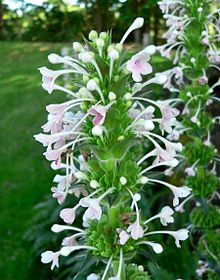
The Apiales are an order of flowering plants. The families are those recognized in the APG III system. This is typical of the newer classifications, though there is some slight variation and in particular, the Torriceliaceae may also be divided.

The Dipsacales are an order of flowering plants, included within the asterid group of dicotyledons. In the APG III system of 2009, the order includes only two families, Adoxaceae and a broadly defined Caprifoliaceae. Some well-known members of the Dipsacales order are honeysuckle, elder, viburnum, and valerian.

The Fabaceae or Leguminosae, commonly known as the legume, pea, or bean family, are a large and agriculturally important family of flowering plants. It includes trees, shrubs, and perennial or annual herbaceous plants, which are easily recognized by their fruit (legume) and their compound, stipulate leaves. The family is widely distributed, and is the third-largest land plant family in number of species, behind only the Orchidaceae and Asteraceae, with about 765 genera and nearly 20,000 known species.
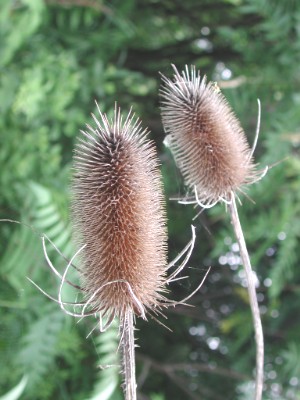
The Dipsacaceae were recognized as a family of the order Dipsacales containing 350 species of perennial or biennial herbs and shrubs in eleven genera. It was published by Antoine Laurent de Jussieu in his book Genera plantarum on page 194 in 1789.

The Caprifoliaceae or honeysuckle family is a clade of dicotyledonous flowering plants consisting of about 860 species, in 33, to 42 genera, with a nearly cosmopolitan distribution. Centres of diversity are found in eastern North America and eastern Asia, while they are absent in tropical and southern Africa.

Ranunculaceae is a family of over 2,000 known species of flowering plants in 43 genera, distributed worldwide.
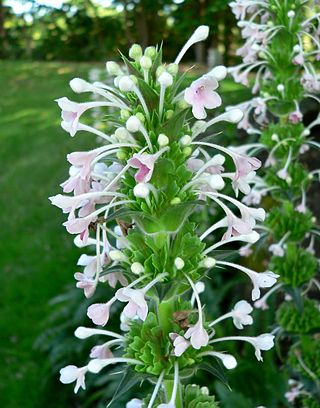
Morina is a genus of the angiosperm family Caprifoliaceae. It is unofficially the provincial flower of the Khyber Pakhtunkhwa province of Pakistan. Morina is named in honor of Louis Morin de Saint-Victor (1635–1715), a French physician, botanist and meteorologist.
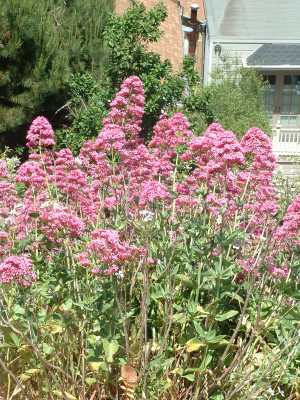
The Valerianaceae Batsch, the valerian family, was a family of flowering plants that is now considered part of the Caprifoliaceae. Plants are generally herbaceous, and their foliage often has a strong, disagreeable odor. They are found native in most regions of the world except for Australia. Some species are cultivated as ornamentals or used in herbal medicine for inducing relaxation and sleep.

Gesneriaceae, the gesneriad family, is a family of flowering plants consisting of about 152 genera and ca. 3,540 species in the tropics and subtropics of the Old World and the New World, with a very small number extending to temperate areas. Many species have colorful and showy flowers and are cultivated as ornamental plants.

Asphodelaceae is a family of flowering plants in the order Asparagales. Such a family has been recognized by most taxonomists, but the circumscription has varied widely. In its current circumscription in the APG IV system, it includes about 40 genera and 900 known species. The type genus is Asphodelus.
Asteridae is an obsolete botanical name at the rank of subclass. Composition of the subclass has also varied; however, by definition it always includes the family Asteraceae (Compositae). In the modern APG IV system of classification, asterid and euasterid are names for clades with a composition similar to that of Asteridae.
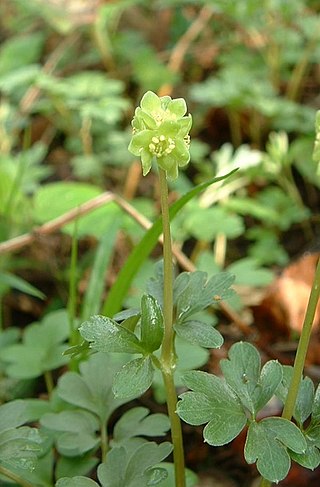
Adoxaceae, commonly known as moschatel family, is a small family of flowering plants in the order Dipsacales, now consisting of five genera and about 150–200 species. They are characterised by opposite toothed leaves, small five- or, more rarely, four-petalled flowers in cymose inflorescences, and the fruit being a drupe. They are thus similar to many Cornaceae.
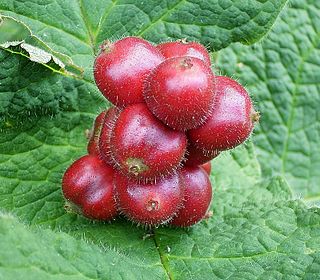
Triosteum, commonly known in American English as horse-gentian or, less commonly, feverwort, and, in Standard Chinese as 莛子藨属, is a genus of flowering plants belonging to the family Caprifoliaceae. A genus of six species in total, it has three species native to North America, and three more in eastern Asia.

Acanthocalyx is a genus of about three species of plants in the family Caprifoliaceae, sometimes included in Morinaceae, native to Sino-Himalayan Region.
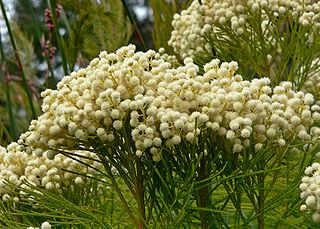
Bruniaceae is a family of shrubs native to the cape region of South Africa. They are mostly restricted to the Cape Province, but a small number of species occur in KwaZulu-Natal.
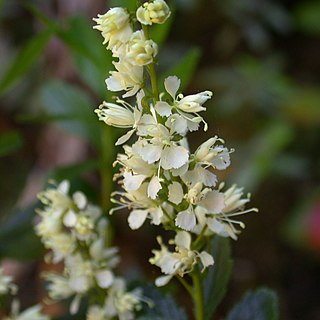
Tetracarpaea is the only genus in the flowering plant family Tetracarpaeaceae. Some taxonomists place it in the family Haloragaceae sensu lato, expanding that family from its traditional circumscription to include Penthorum and Tetracarpaea, and sometimes Aphanopetalum as well.
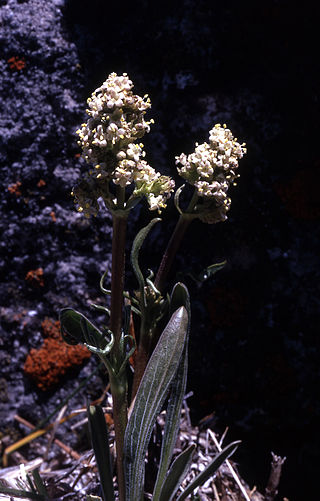
Valeriana edulis, the tobacco root or edible valerian, a species in the family Caprifoliaceae, is a dioecious perennial flowering plant native to western and central North America. Despite its common name, tobacco root is not closely related to tobacco, but is instead more closely related to elderberry, honeysuckle, and teasel.

Morina longifolia, the Himalayan whorlflower or long-leaved whorlflower, is a species of flowering plant in the family Caprifoliaceae, native to the foothills of the Himalayas. A perennial hardy to USDA zone 6a, it is recommended for borders and beds, in courtyard, cottage, gravel and rock gardens, but is subject to rot if there is too much shade. Its habitats include open slopes and alpine shrubberies.

Lomelosia is a genus of flowering plant in the family Caprifoliaceae and the subfamily of Dipsacoideae. The genus includes over 50-63, perennial and annual species, diffused around the Mediterranean Sea, with the greatest diversity of species concentrated in the eastern Mediterranean and the Middle East, and also has a few species reaching as far east as China.
